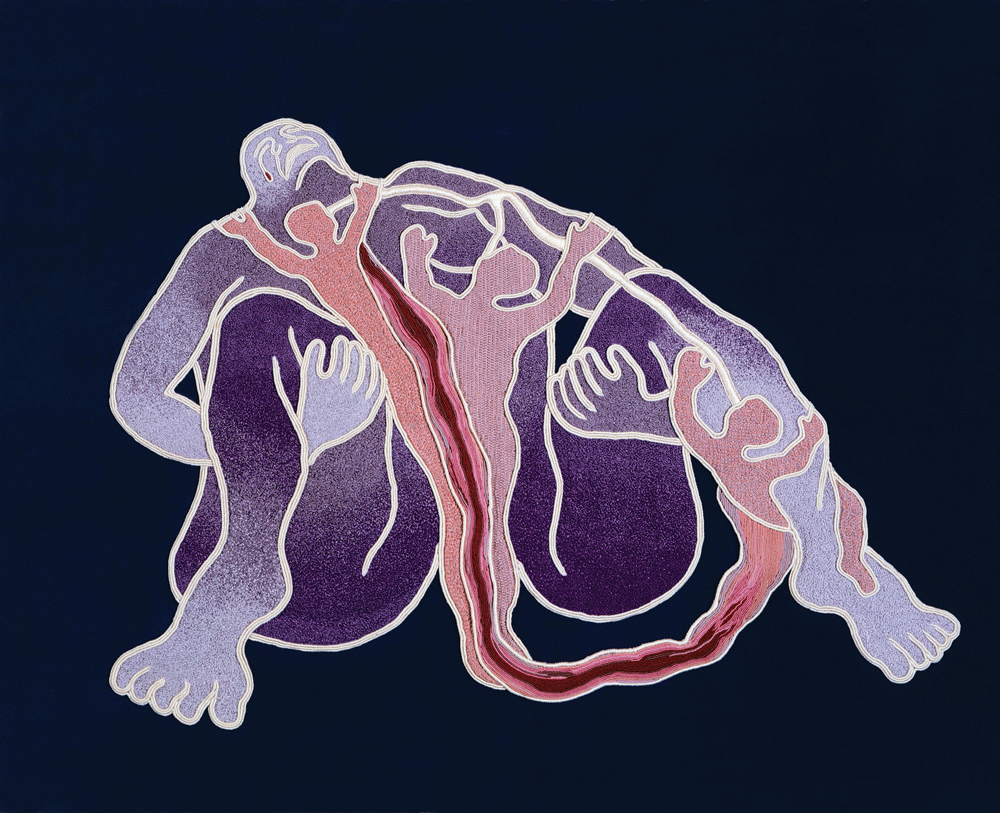Born on Jul. 20, 1939, in Chicago, Illinois, Judy Chicago is known as one of the most prolific artists in the world. Her multimedia work spans six decades, with themes of feminism, social justice, and environmentalism following her career. The themes of her work align strongly with the United Nations Sustainable Development Goal for Gender Equality, Reduced Inequalities, and Life on Land.
Inspired by the women's movement of the 1960s, Chicago’s first pieces in the early 60s explored her own experiences and sexuality through minimalism. One of her more notable works at the time was Pasadena Lifesavers, a series of airbrushed geometric shapes meant to signify her experiences as a woman. The light strokes and geometric half circles in the works suggest the female sexual body by creating abstract representations of breasts and orifices.
Chicago became one of the icons of feminist art in the 1970s largely through her most famous piece, The Dinner Party. Created by Judy Chicago along with more than 400 volunteers, The Dinner Party is a triangular table representing 1,038 women in history, 39 on the plate settings and an additional 999 names inscribed on the table’s base. Each plate setting features ceramic plates suggestive of female genitalia, and each wing of the table represents a different time period. Although The Dinner Party evoked strong reactions from the public, with many calling it “disturbing” and “pornographic”, it serves as a powerful statement by addressing the maleness of the art world and celebrating women throughout history. Since its creation in the 70s, The Dinner Party has been visited again and again to generate dialogue on women’s history and the ongoing fight for women’s rights and social justice.

In the early 80s, Chicago collaborated with more than 150 needleworkers to create Birth Project, a collection of tapestries on the birth process. Chicago’s tapestries are gloriously mystical, strikingly painful, and above all, a homage to motherhood. Through vibrant colours and hypnotic lines, Chicago achieves her goal of “[making] the feminine holy." Despite the criticisms of the work’s “vulgar” nature, Birth Project honours women and the universally remarkable feat of giving birth.
At around the same time period, Chicago also created Powerplay, a collection of drawings, paintings, weaving, and sculptures that challenge and critique the patriarchy. In contrast to the curved and feminine nature of Birth Project, Powerplay utilizes geometric shapes and harsh lines to explore the range of male experiences and emotions, which is a range not often explored in the works of both female and male artists. Powerplay draws a particularly critical eye to male power and its consequences in the world.
Perhaps inspired by her enquiries into male power and her own Jewish heritage, Chicago and her husband Donald Woodman began to create The Holocaust Project: From Darkness to Light in the late 80s to early 90s. As a collection of multimedia works, the Holocaust Project: From Darkness into Light focuses on 5 distinct sections: the Jewish experience during the Holocaust, the power of global superpowers against the Jewish people during the Holocaust, events similar to the Holocaust throughout history (ex. Native American genocide and the Vietnam War), the moral and ethical implications of the Holocaust, and the transformation of the Jewish experience. The universal topics of victimization, oppression, injustice, and human cruelty are explored in The Holocaust Project, connecting with the United Nations Sustainable Development Goal of Reduced Inequalities.
Towards the 21st century, Chicago’s works have also touched upon topics surrounding environmentalism. Most recently in 2020, Chicago created a collection titled Before It’s Too Late. It’s a collection of animal portraits of increasingly endangered animals in the Rio Grande Valley of New Mexico. With evocative phrases such as “Do I have a right to live?” under an image of a Mexican gray wolf, Chicago puts an emotional appeal into reconsidering the human actions that are endangering the lives of animals. By advocating for the endangered animals of the Rio Grande Valley, Chicago aligns herself with the United Nations Sustainable Development Goal of Life on Land.
At the age of 83, Chicago continues to initiate discussions surrounding her feminist work, social justice, environmentalism, and much more. In the 21st century, the themes of her work have only gone stronger over time.
